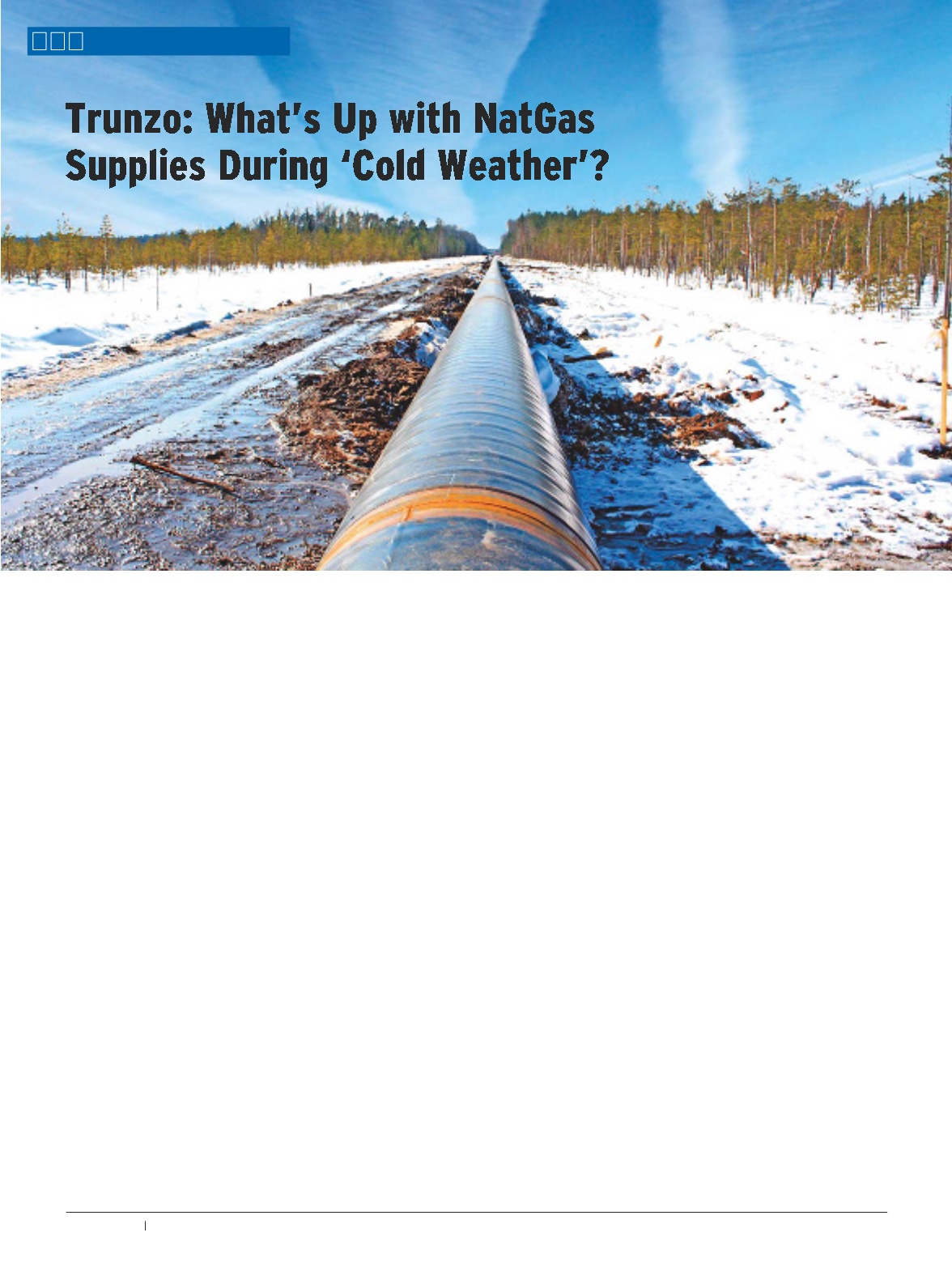
ÓÓÊU "
&
ENERGY
ivi`}Ê"
i>Ì
“Con Edison is interrupting Gas Sales and
Transportation Notification Customers begin-
ning Friday, January 3, 2014 at 1:00 A.M...”
“…as a courtesy of National Grid. An
interruption of natural gas service has been
scheduled for all Temperature Controlled,
Semi Automatic and Interruptible customers.”
“Orange and Rockland Utilities, Inc.
(“O&R”) is calling for a gas curtailment effec-
tive Friday, January 3, 2014 at 10:00 A.M….
Failure to comply with this Gas Curtailment
will result in the assessment of penalties...”
The three notices above were all issued
on or around December 31, 2013, by
natural gas utilities, going out to a certain
segment of the customer base. This class of
customer, called “interruptible customers,”
is those who use natural gas as their primary
source of heat but must rely on a back-up
or alternate fuel supply—in most cases,
heating oil—when the weather gets cold.
This is necessary because in cold weather,
natural gas contracts, and utility companies
cannot continue to supply natural gas as
per their contract due to lack of supply
pressure. In New York City, there are over
4,000 “interruptible” customers who, when
these notices are received, need to switch to
ultra-low sulfur heating oil for their needs,
and create demand and potential price
spikes for regular heating oil customers.
This circumstance occurs all throughout
the Northeast.
HL<JK@FE1 JF N?8K @J K?< GIF9C<D6
Natural gas is an unreliable fuel source
in cold weather. When temperatures
reach certain degrees of cold, natural gas
contracts in the pipeline, resulting in a
pressure failure – and the inability of utili-
ties to deliver sufficient gas supplies. This
occurs on top of an inadequate interstate
pipeline infrastructure to move the abun-
dant production of crude oil and natural
gas products from the source to the market
(from west to east), especially to New York
and New England.
So when cold weather sets in, which
is not unusual in the Northeastern United
States, natural gas companies need to rely
on heating oil as the savior for their heating
customers who have nowhere else to turn.
One might question the panacea of
public policy proposals calling for the
expansion of natural gas pipelines, and
utility efforts to continue to add new
customers, citing natural gas as a cheap,
abundant, efficient, and clean source of fuel
for commercial and residential customers
alike. This expansion ignores several
factors and serves only to exacerbate the
unreliable nature of natural gas during cold
weather periods.
This brings to the forefront several
energy issues:
(1) In 2013, the United States produced
the largest volume of crude oil and natural
gas in the nation’s history. This, along with
shale formation development in Canada
and Mexico, leads to the fact that with an
all-in energy policy, North America could
be energy independent from the rest of the
world and even become a leading exporter
of energy. Reliance on one fuel will not bring
the U.S. or North America to that place of
independence … and energy independence
can be achieved in an environmentally
friendly way. The challenge for the U.S. is to
move the lower-cost U.S. crude and natural
gas products from source to market, west to
east, as our current transportation systems
are not adequate in this regard.
(2) Today’s cleaner burning ultra-low
sulfur diesel home heating oil advances
energy efficiency, and when blended with
biodiesel, ensures a renewable, environ-
mentally clean and adequately supplied
EDITOR’S NOTE:
During the extended stretch of polar vortex-induced cold that began in late December, utilities switched interruptible
customers off of natural gas due to excessive demand. New England Fuel Institute President and CEO Michael Trunzo addressed the issue in
the following letter submitted to the Wall Street Journal.


